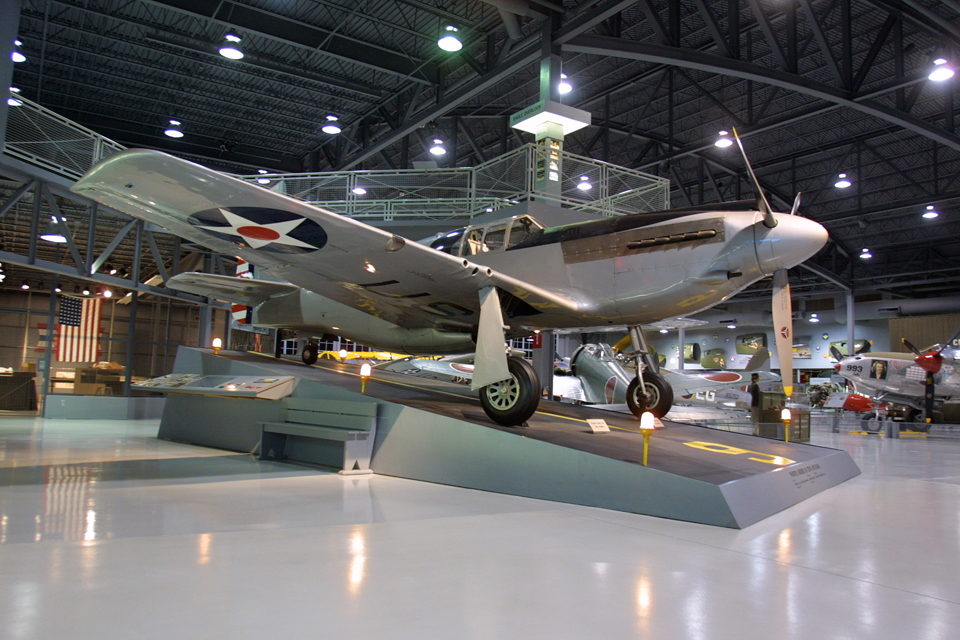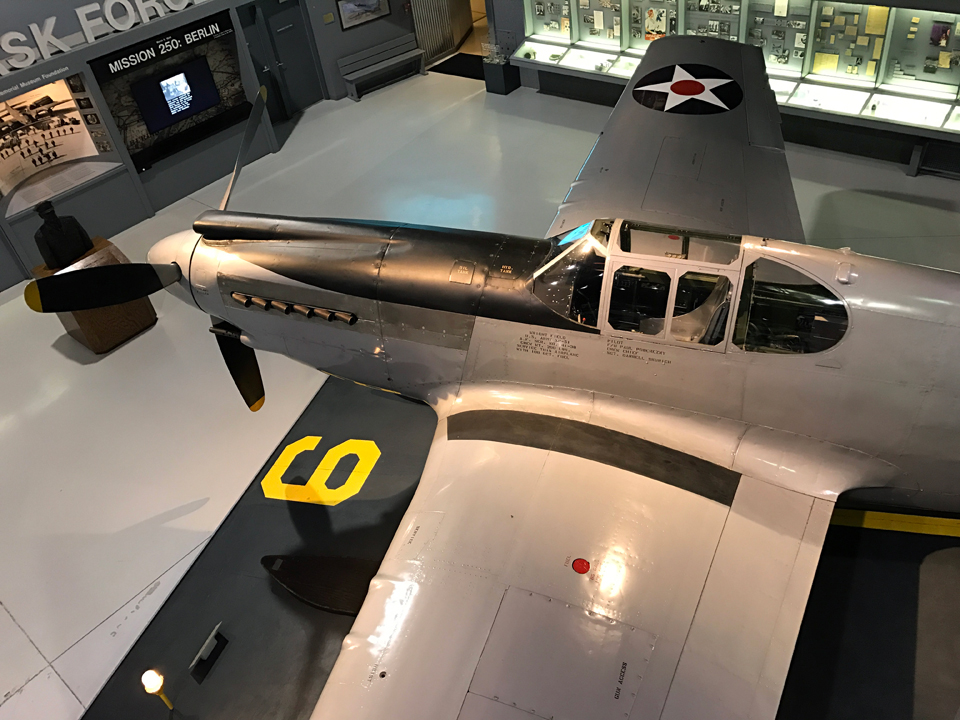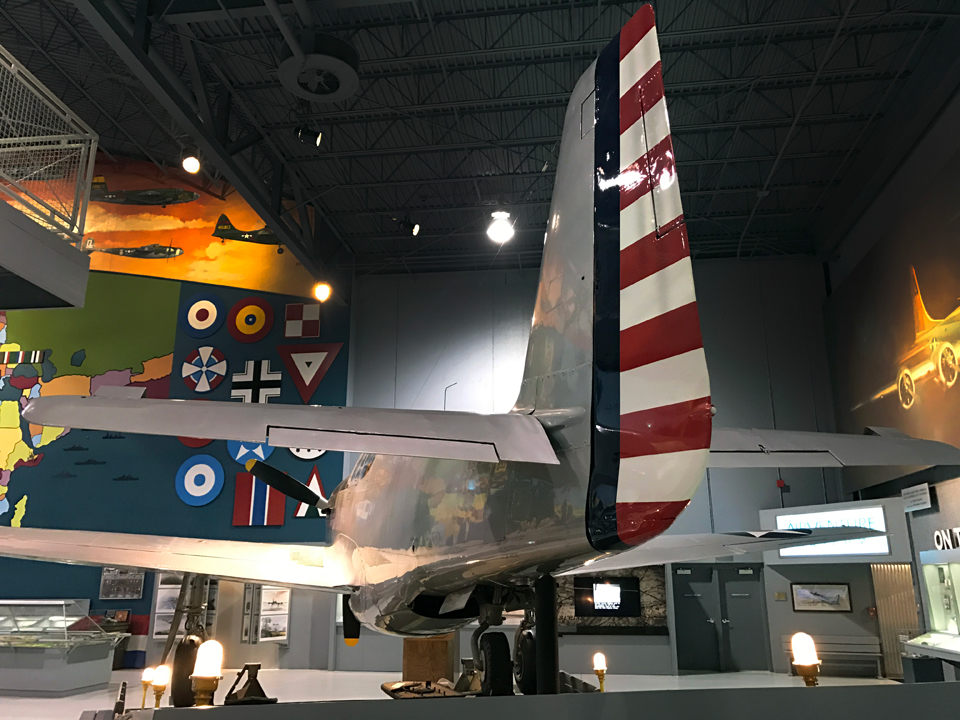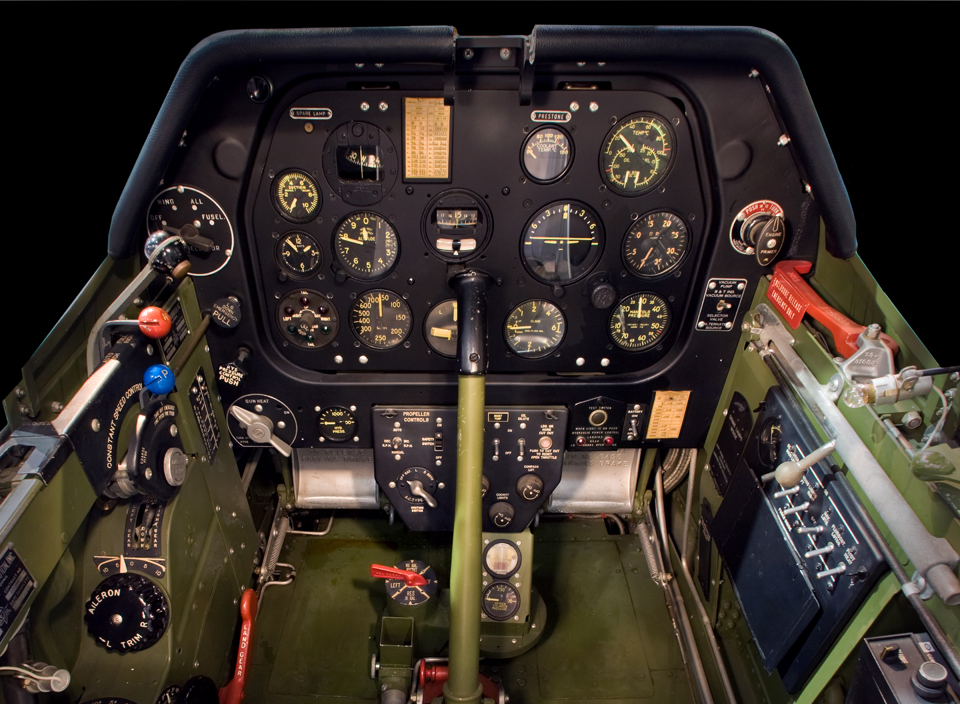1941 North American XP-51 Mustang - NX51NA
Location: Eagle Hangar
The North American P-51 Mustang was arguably the most successful — and most versatile — fighter of World War II. Designed in 1940 for use by Great Britain, the first prototype XP-51 was finished in just 117 days. The Allison-powered P-51A was dubbed the Mustang Mk. 1 by the British and first deployed in tactical reconnaissance in the spring of 1942. The U.S. Army’s Eighth Air Force received its first P-51s (B models) in 1943.
The familiar P-51D, with its bubble canopy and Rolls-Royce Merlin engine, appeared in 1944 and became the major production version (7,956 built). The Mustang dominated the skies over Europe, mainly as a long-range escort for Allied bombers. During World War II, P-51s carried out nearly 214,000 missions in all theaters of war, destroying 4,950 enemy aircraft — nearly half of the total losses suffered by the enemy in the European theater.
U.S. Air Force Mustangs served with distinction in the Korean Conflict (1950-1953). In all, Mustangs have served the air forces of more than 50 other countries. Today, the P-51 is a popular air show performer and air racer.
The EAA Aviation Museum’s XP-51 was the last of the four prototypes built by North American Aircraft in 1940, and the first P-51 delivered to the U.S. Army Air Forces. XP-51 No. 4 was acquired by EAA after years in storage at the Smithsonian’s National Air and Space Museum. It was completely restored in 1975-1976 by Darrell Skurich of Fort Collins, Colorado, and flew in the Oshkosh air show from 1976 until Paul Poberezny made the final flight in late 1982.
Aircraft Make & Model: North American XP-51
Length: 32 feet, 3 inches
Wingspan: 37 feet, 1/2 inch
Height: 12 feet, 2 inches
Empty Weight: 6,280 pounds
Gross Weight: 10,600 pounds (estimated)
Crew: 1
Powerplant: 12-cylinder Allison V-1710-39
Horsepower: 1,100 hp
Cruise Speed: 300 mph
Maximum Speed: 380 mph
Range: 500 miles
Armament: Four .50-caliber Browning machine guns









